Saving money and the environment is what I’m all about right now. I started a series all around this topic covering how to save money on your electric bill, your water bill, and, of course, going zero waste.
I’ve been taking each of these series room-by-room through the home. This week we’re in the kitchen but make sure to check out my last post in this series How to Save Money on Your Electric Bill in the Bathroom.
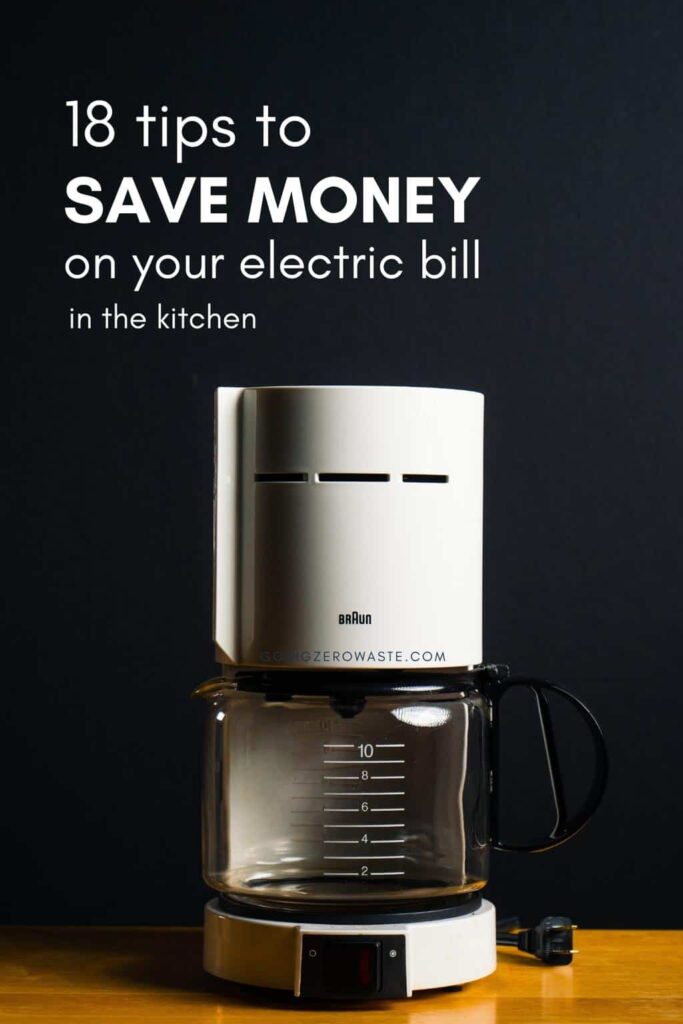
It should come as no surprise that the kitchen uses A LOT of power. This is one of the most appliance heavy rooms in the house, and many of them stay plugged in 24/7 which is responsible for oh-so-spooky *phantom electricity*.

Now, if you caught my last post then you know that phantom electricity makes up more than 10% of an average homes annual electricity bill.
Phantom electricity happens when electronic devices are plugged in but not actively working. If you have a toaster plugged in and sitting on your counter, it’s still drawing electricity from the power grid.
While it’s not drawing a ton of power, its still enough to add up on your electric bill. Other kitchen examples would be your dishwasher, microwave, toaster or a blender plugged in even when not in use.

While it might be pretty difficult to get behind your cabinets and unplug a microwave or dishwasher you can certainly unplug your smaller appliances.
I’ve created a chart that shows the breakdown of the most intensive energy appliances and I’ll walk you through reducing costs on each of them.
I’ve estimated the price per appliance using $00.236 which was the average price last month, where I live, in San Francisco. If you’re curious about how to make these calculations yourself check out this handy energy calculator.
Appliance
Usage
Watts
Cost Per Year
Fridge/Freezer from 80’s
365 Days, 24 Hrs
250
$517
Fridge Freezer from 2011+
365 Days, 24 Hrs
180
$372
Older Dishwasher
365 Days, 1 Hr
2500
$215
Newer Dishwasher
365 Days, 1 Hr
1800
$155
Coffee Maker
365 Days, 20 Min
800
$23
Microwave Oven
365 Days, 20 Min
1200
$34
Electric Oven
365 Days, 1 Hr
2400
$207
Cook Top
365 Days, 1 Hr
1500
$130
Toaster
365 Days, 15 Min
1200
$26
Crockpot
365 Days, 6 Hrs
160
$83
fridge:
On average a fridge is 13% of a households electricity bill. As you can see from the graph above, if you’re using an older fridge your costs are going to be MUCH higher.
One way to save electricity and money is to get a new energy efficient fridge. Obviously buying a new fridge will be a pretty large upfront investment, but there are several programs that offer rebates when you upgrade so you can save even more.
If you already have an energy efficient fridge, here are a few more ways you can save on your electricity bill.
1. keep the fridge door closed:
I know this one is probably painstakingly obvious, but keep the fridge door closed.
Figure out what you want to eat BEFORE opening the door because the longer you loiter the more sweet, cool air escapes which means a higher energy bill.
I think it’s pretty funny that LG created a fridge with a window specifically to address this problem. You can lurk without actually opening the door. You simply knock twice on the window and the light turns on so you can see your food inside.
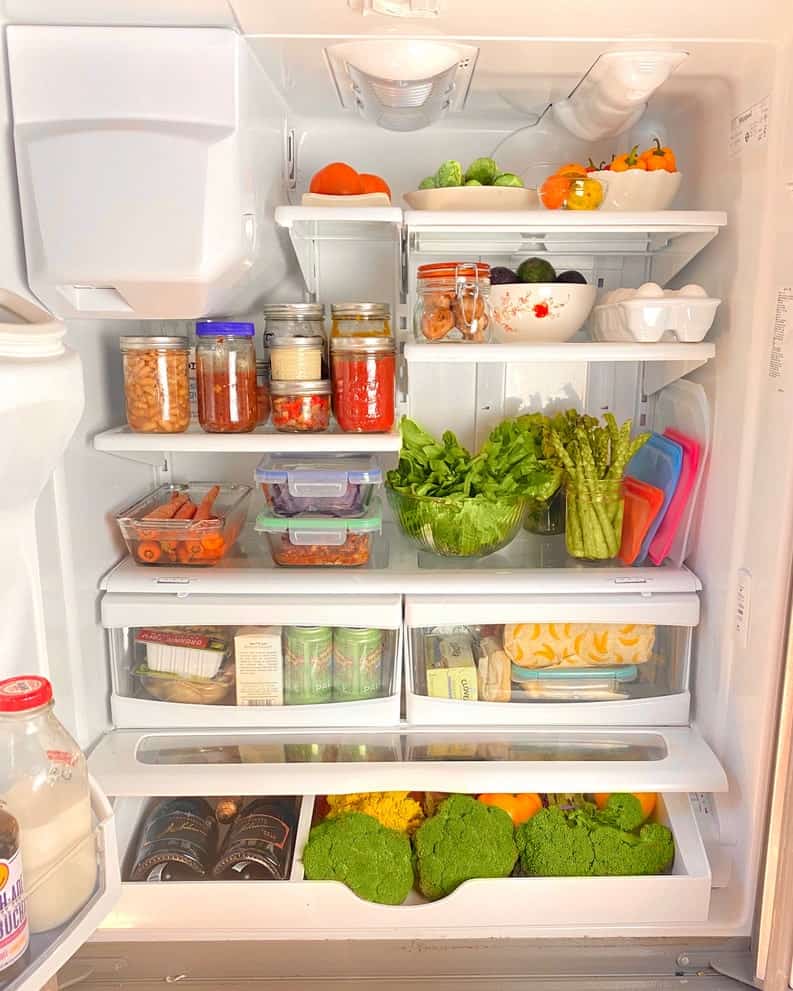
2. keep your fridge and freezer full:
One easy way to lower your energy costs is to keep your fridge and freezer full!
Every time you open your refrigerator, cold air comes out and room temperature air goes in.
After you shut the door, the fridge revs up to cool everything down again so more empty space in the fridge equals more warm air and the harder your fridge has to work.
When your fridge is full, there’s less space for warm air so your fridge has less work to do.
If you lose power, a half-full freezer can safely hold food for up 24 hours, but a FULL freezer can hold food for up to 48 hours!
If your fridge is too big for your needs, you can store some bottles of water in the back or a few of these pantry staples which actually do better in the fridge than in the pantry: nuts, seeds, flours, brown rice, quinoa and other whole grains.
3. turn off the ice machine:
Remember when I said that a fridge is responsible for 13% of a home’s energy bill?
Well that number jumps to 20% if your fridge has an automatic ice maker. According to TIME, this secret energy hog is jacking up your bill.
Most automatic ice makers have a lever that indicates when the ice tray is full. if you lift that lever all the way up, you can turn the ice maker off and go back to manually filling up your ice trays.
My recommendations are silicone or stainless steel trays over plastic, but if you still have plastic ones keep using those till they break.
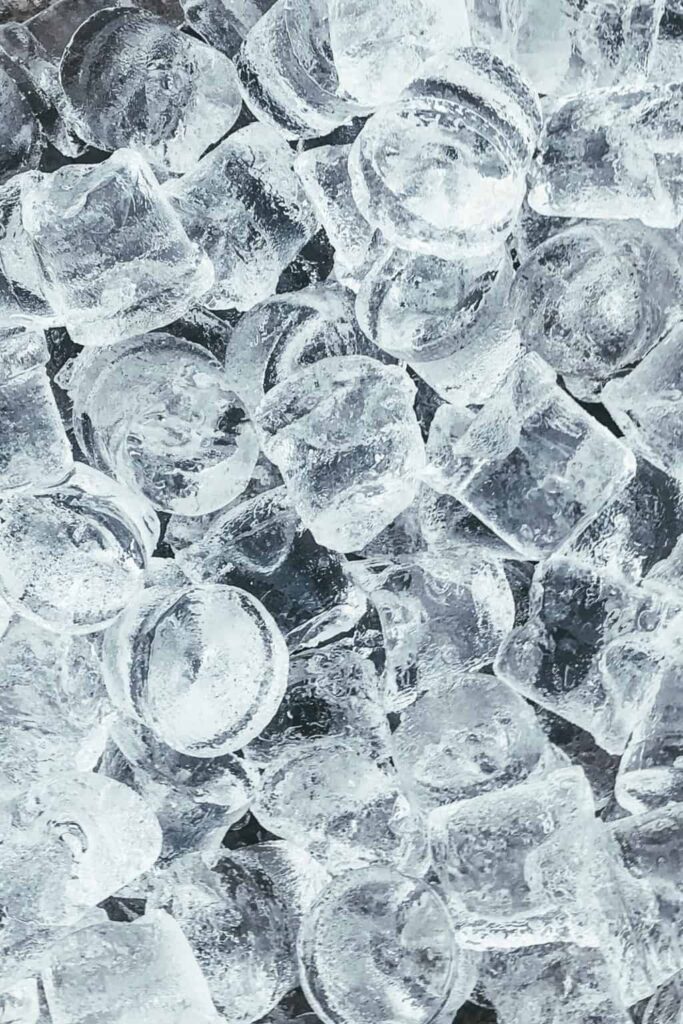
4. keep your refrigerator coils clean:
You’re definitely need to add ‘clean the refrigerator coils’ to your spring and fall cleaning checklist.
If you have pets that shed a lot… like Nala, my husky, who loses hair like its her job, then you might want to clean them even more often.
When the coils get clogged with dirt, dust, and husky hair they can’t properly release heat so the compressor has to work harder and longer than it’s supposed to. Not only will this increase your electric bill, it will also shorten the life of your fridge!
You can clean your coils with a coil cleaning brush and/or a vacuum.
RELATED: 15 All-Natural, Eco-Friendly Brands that Make Cleaning Products
5. keep your fridge temperature on the optimum settings:
Did you know your fridge can be too cold?
A too cold fridge can spoil foods by frosting them and changing the texture and/or taste. Not to mention that too cold settings will unnecessarily use up A LOT more energy resulting in a higher energy bill.
Refrigerators should be set to a temperature of 37 to 40 F, and freezers should be at 5 degrees.
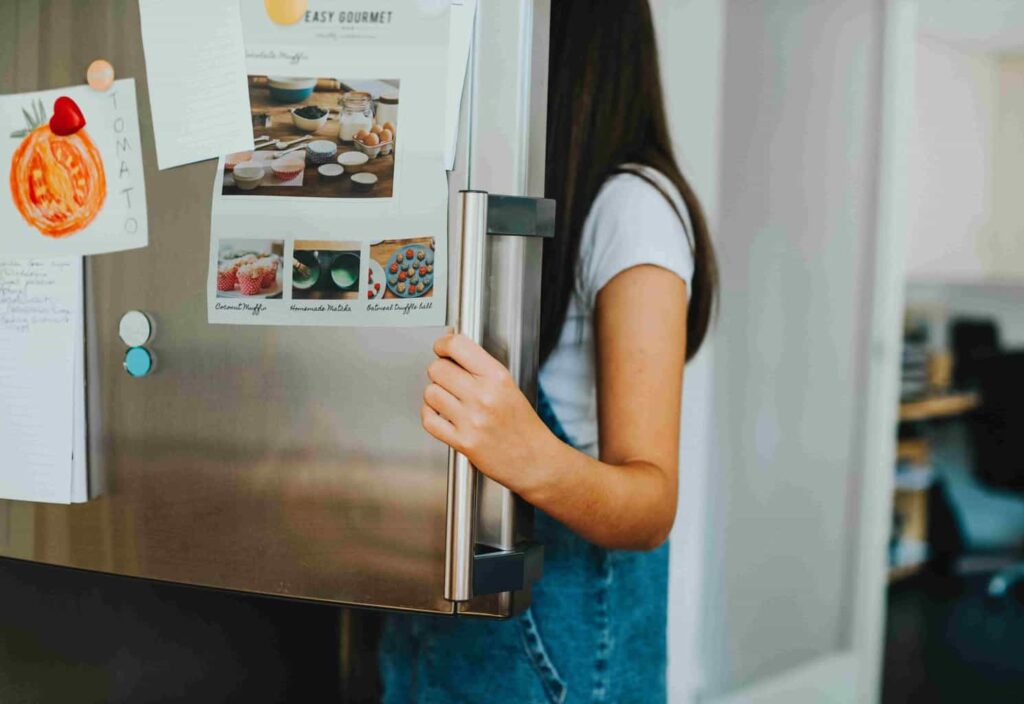
6. check your seal:
The seal or gasket is the most important thing to make sure that your fridge or freezer is running smoothly.
It’s very common for gaskets or seals to loosen over time. This loss in suction will cause cool air to slip out and your fridge to be working overtime.
The dollar bill test is an easy way to check your doors. Simply place a dollar bill across the gasket and close the door. If the bill is difficult to pull out, then your seal is in good shape!
If the bill slides out easily, you’re probably losing air. The gasket might need to be replaced or hinges tightened.
7. put cool food in the fridge:
If you have leftovers, don’t place them in the fridge piping hot. Give them a few minutes to cool down before opening that fridge door.
If you put a piping hot bowl in the fridge, it’s going to release a lot of heat causing your fridge to work overtime. If you put your leftovers in the fridge after they’ve cooled down, you’ll keep your fridges work to a minimum.
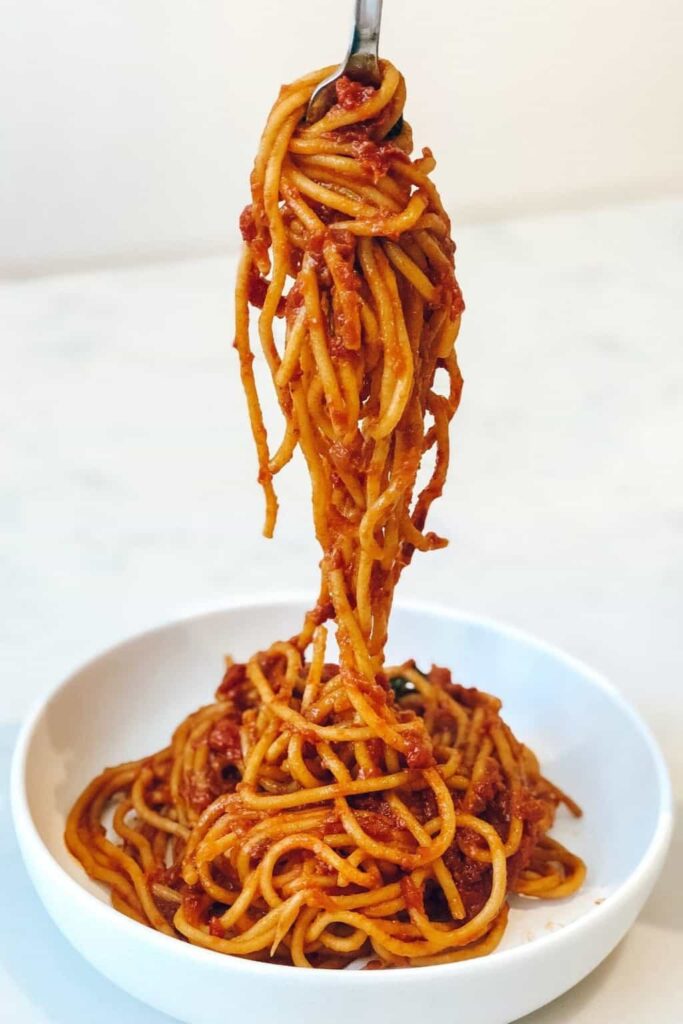
dishwasher:
Ah, the age old question… which is better: the dishwasher or hand washing?
Well, if you’re looking to save water, time and energy then your best bet is going to be the dishwasher!
A modern dishwasher only uses 3-5 gallons of water, and it takes about 4x that that to wash your dishes by hand. Here’s a really great study on it.
Now, this blog post isn’t about saving water its about saving energy! So, unless you’re hand washing your dishes with cold water (which is doubtful) you’ll be saving energy because less warm water = less energy to heat it. Boom.
RELATED: 8 Ways for Saving Money on your Water Bill in the Bathroom
8. run the dishwasher FULL:
I think this one is pretty self explanatory. If you’re going to be running your dishwasher, you should get the most bang for your water and energy by running it FULL.
To make your dishwashing experience extra efficient, make sure you place large bowls and casserole dishes on their sides towards the back of the machine and have all of the plates facing inwards towards the center.
This will allow the water to flow freely through the machine and prevent any issues with the detergent arm not releasing.

9. lower the temperature:
Most dishwashers run at 140° F which is entirely unnecessary for every day dishes so turn the heat down to 120° F.
The only time you need to up your temperature is if you’re trying to sanitize and most dishwashers have a ‘sanitize’ button which will increase your temperature to 150°F.
But, there’s no reason your dishwasher should run THAT hot every time – it’s just a waste of energy.
10. air dry your dishes:
If you have a newer dishwasher is probably has ‘eco’ setting. This setting should automatically lower the water temperature, skip the rinse, and turn off the drying function.
Many dishwashers have a built in air-dryer to speed up the drying process. Running this is pretty energy intensive so instead just crack the door of the dishwasher after the load has finished and let them air dry naturally.

11. skip the rinse:
I’ve never understood why there was a button for an extra ‘rinse’ on dishwashers and washing machines… why is an extra rinse necessary? What is the purpose?
I have never needed to rinse my things again and I’m guessing your probably don’t either. So, skip the additional rinse to save water and energy!
12. run the dishwasher at night:
Now, this is strictly a money saving hack! Energy companies charge the most during peak hours which fall between 4pm – 9pm.
So run your dishwasher first thing in the morning before you go to work or right before you go to bed. It’s always best to try and use any major appliance during these off hours to save some serious cash.
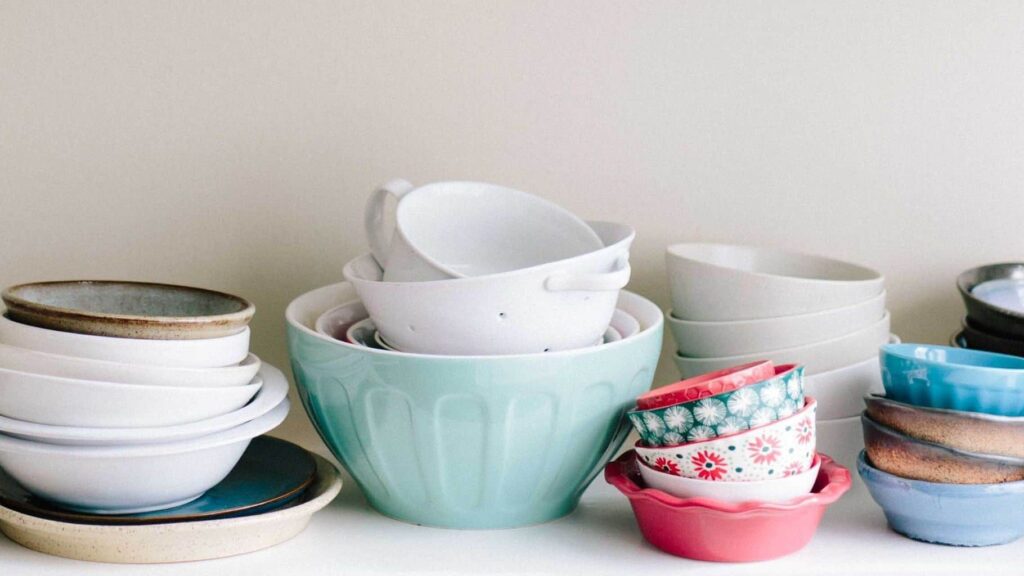
oven and cooktop:
You’ve officially made it half way through this blog post, and now you understand why I broke this up into a series. Be sure to check out all of my money and planet saving hacks.
If it had all been one blog post it would have been a novella.
It’s no secret that an easy way to save waste and money is to skip the takeout and cook from home, but heating up your stove and oven can raise your electric bill so I’ve rounded up few ways to avoid that!
13. use a crockpot:
If you check out the chart I made above, you can see all of the savings when using a crockpot.
If you used your crockpot every day instead of your oven or cook top, you’d save A LOT of money!
Even though the crockpot stays plugged in longer, it uses far less energy, and as an added bonus the crockpot won’t heat up your house so if it’s summer time consider making a few crockpot meals to save on energy costs.
And, don’t forget – don’t lift the lid! Every time you lift the lid of the crockpot you increase the cooking time by about 30 minutes.
Let me know if you’d be interested in some of my favorite plant-based crockpot meals.
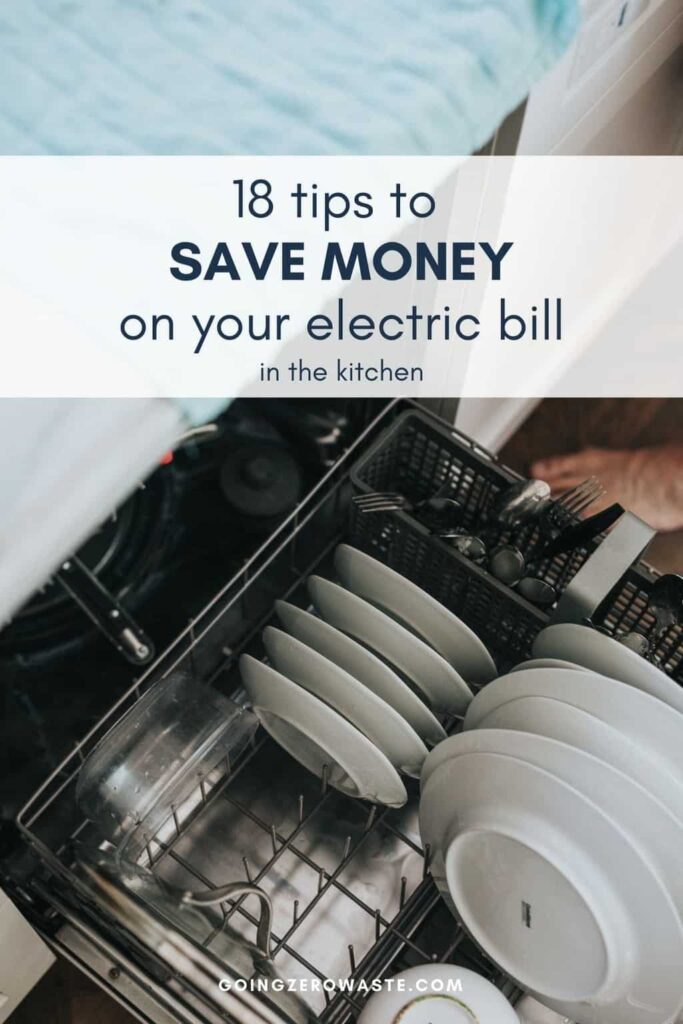
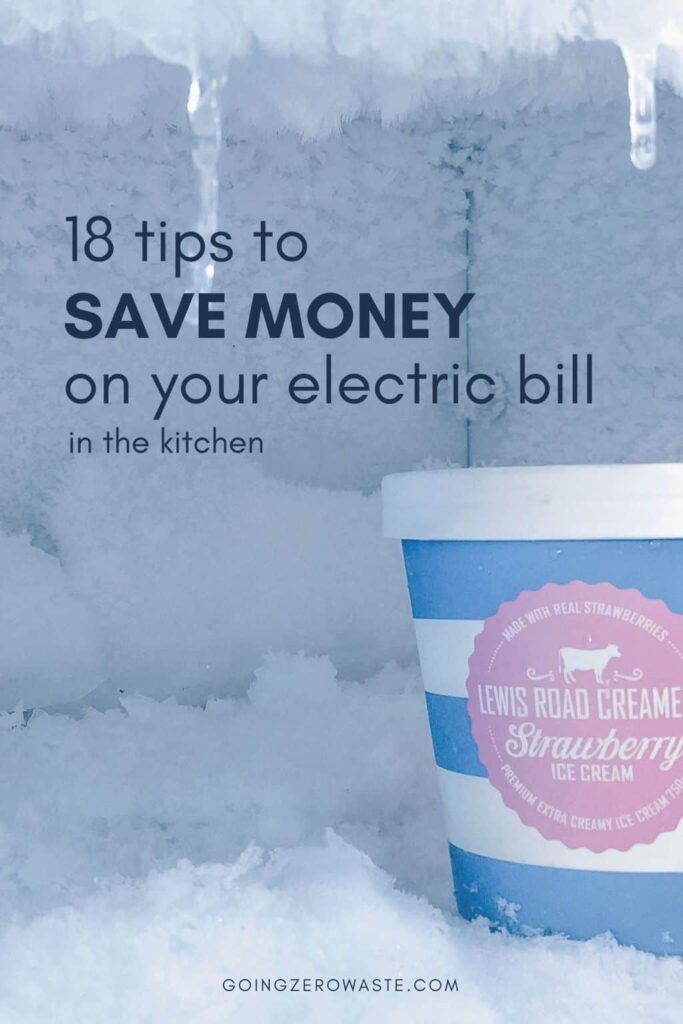
14. use a toaster oven:
If you need to heat something smaller, consider using a toaster oven.
A toaster oven is much smaller than a conventional oven so you’ll save a lot of time and energy costs.
15. use a microwave:
Are you seeing a pattern? A microwave also uses less energy than your stove or cooktop.
If you use a microwave every day for 30 minutes at .236 cents per kWh, the avg price of electricity in San Francisco last month, your monthly cost is $4.
If you used an oven for the same amount of time, you’d pay double.
One of my favorite zero waste snacks is popcorn. To be honest with you I’ve never been able to nail making it on the stove top…
Instead, I pour my popcorn kernels into a brown bag (which I reuse until it falls apart) and hit the popcorn setting on the microwave and boom – perfect popcorn! Saves waste and energy.

16. use the proper sized pot or pan:
I like to think of myself as a minimalist. I don’t have a ton of pots and pans, but it is important to have a few different sizes.
If you use a pan that is 2″ smaller than your burner you can waste up to 40% of the heat and energy!
Try to make sure your pots and pans match the size of your burners.
17. chop smaller:
I’m a big fan of small vegetables. When you chop your vegetables smaller, it takes less time to cook them. Less time = less energy.
As a bonus, they’re easier for picky eaters to eat. Smaller vegetables are just less intimidating, and as someone who LOVES vegetables even I don’t like it when I have to cut my veggies with a fork and knife at the dinner table.
Chopping can be time consuming so one of my favorite ways to chop vegetables is by using my food processor which takes all of the work out of it.

coffee maker:
I don’t have many tips for the coffee maker, but I did want to bring up this topic for the final 18th tip.
18. brew a better cup:
I read a great blog post on the most eco-friendly way to brew a cup coffee. In the post, they compared the energy use of a drip coffee pot, a microwave, a keurig, a mini-drip coffee pot, a kettle, and an espresso maker.
Surprisingly, the least wasteful way of brewing coffee, a french press, is also the least energy intensive!
So, in my book the french press is the winner. PLUS, it’s one of my favorite zero waste swaps, and I wrote a whole blog post rounding up my top 10 favorite eco-friendly swaps.

This wraps up the most recent post in my save money, save the planet series!
If you enjoyed this post or learned something new, please share it with your friends and family, and be sure to join my zero waste community so you don’t miss the next post in the series.
WANT MORE?
Join my exclusive zero waste support group, get extra content in your inbox, get a copy of my FREE e-book “A Crash Course in Going Zero Waste.”
Success! Now check your email to confirm your subscription.
There was an error submitting your subscription. Please try again.
I’d like to receive the free email course.
I won’t send you spam. Unsubscribe at any time.
Powered by ConvertKit
The post How to Save Money on Your Electric Bill in the Kitchen appeared first on Going Zero Waste.







